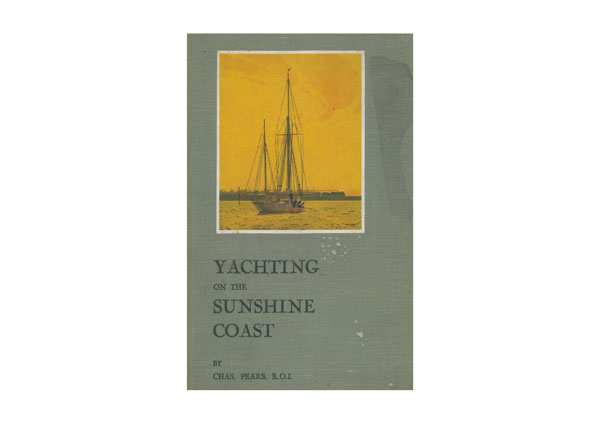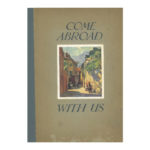Description
The Southern Railway produced some really high quality books, promoting the attractions which it served with travel details. While they commissioned one or two hacks, who admitted in private, that it was only the fees from the railway company which helped keep the wolf from the door, they also commissioned top flight artists like Charles Pears, RI, ROI, RSMA,1873-1958, who apart from producing a number of poster designs for the Southern, used his hobby of small yacht sailing to write and illustrate Yachting on the Sunshine Coast.
Born in Pontefract, Yorkshire, he studied nearby at East Hardwick and Pomfret College,where he started a lifelong appreciation of Active from 1890, he worked as an illustrator throughout his career. His early illustrated works were included in periodicals such as The Yellow Book, Punch, The Graphic and Salt-Water Poems and Ballads by John Masefield
Pears is best known as a marine painter, where he often signed his work as Chas Pears. Pears was the first elected President of the Royal Society of Marine Artists. His works were exhibited from 1904 to 1939 in London having moved there, and he also wrote a number of books on small boat cruising. A commissioned officer in the Royal Marines during the Great War, Pears worked also worked as an official War Artist. Then and in 1939-1945. From 1913 to 1936, Pears was a prolific poster artist. He moved to Cornwall in semi-retirement, and died in Truro on 28 January 1958.
Yachting on the Sunshine Coast is immensely detailed in describing yachting venues from Erith, round to Weymouth. Charges for mooring, availability of water (“from hosepipe at end of pier on payment of 6d at Harbour Master’s Office”), repair yards, local shops or farms for milk and eggs,
names of local men who will caretake yachts moored over winter etc. All these details are obviously from Pears’ personal observations. In addition (and it is not clear if he provided this information, or the Southern Railway provided someone to “devil”) for him, for each place, details of weekend fares, from London, latest trains back to Town on Sunday evenings and earliest on Monday mornings.
My experience of small yacht sailing is limited to two or three summers, almost 60 years ago. A friend of my father’s was persona grata with the proprietor of a boat yard at Bowness on Windermere. There he was able to hire, for about £10 a day, one of two yachts classed I was told as “Windemere Racers”. They were Kingfisher painted blue and Magicia, varnished mahogany, both built in 1914. Alternate weekends, we made up a party of four, and motored over to Windermere from Yorkshire, arriving mid morning, to collect oars from the boat house, to row out in a dinghy to the yacht at its mooring. I can still recall the smell, on a hot summer’s day. of tar and paint in the old boat house, and creosote from the wooden jetties. It was all very Swallows and Amazons! We were able to stay out on the lake until dusk, mooring up the yacht, dragging the dinghy up on the shingle and, the yard having long since close, sliding the oars well out of reach under the boat house doors.
How times change! Such trust would not be offered today. I revisited Windermere in about 1976.
The jetties were now concrete, the boathouses steel framed coated in asbestos sheets, and a scan of the moorings through my pocket field glasses revealed no trace of either Kingfisher, or Magicia…
It is usually a mistake to go back somewhere. It is many years since I enjoyed small yacht sailing, but reading this book is a nostalgic substitute.




Reviews
There are no reviews yet.